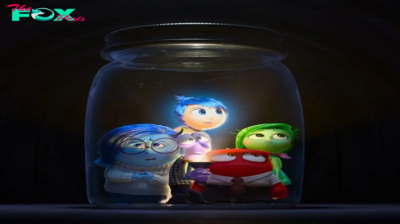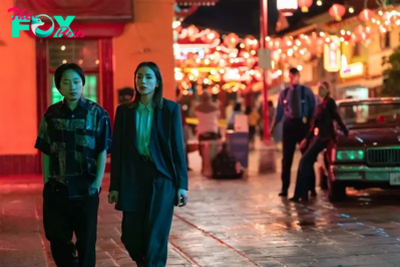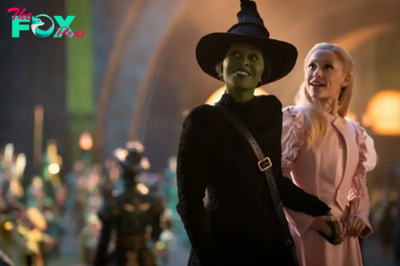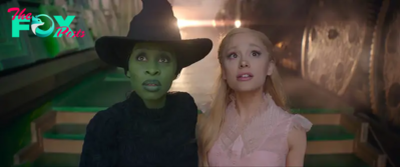Entertainment
The Best Vampire Movies of All Time
There are more types of vampires than there are types of blood. Vampires, creatures of myth and legend that have become iconic pop culture monsters, endure not just because of the unholy curse that animates them but because they are so versatile. These bloodsuckers terrify us, but they also entice us. They’re a grotesque other, and they’re an alluring image of our uninhibited selves. They’re sexy, they’re diseased, they’re the ruling class and the repressed victims. No other monster has their range, and it’s only fitting that vampires have left their distinctive fanged mark on the movies in so many ways.
Vampires have been haunting movies for over a century of cinema. Following some early works in the 1910s, like 1913’s The Vampire, in which vampires appeared more as femme fatales rather than supernatural blood drinkers, filMMAkers looked to sources like Bram Stoker’s Dracula, and to myth and the occult for inspiration. Ever since Count Orlok emerged in 1922’s Nosferatu, vampire movies have never fully retreated into their coffins. Sometimes the subgenre has a surge in popularity. We’re experiencing one right now, as the past couple of years have seen the release of big studio vampire movies like Abigail, The Last Voyage of the Demeter, Renfield, Salem’s Lot, and Robert Eggers’ upcoming Nosferatu remake. Not all of those movies are the best of the bats (though Nosferatu might be, check back here in December for an update). But the deluge of vampire movies means it’s as good a time as any, especially in Spooky Season, to count up all the Counts and other vampires and celebrate some of the best vampire movies ever made.
The following 25 films, presented in the order in which they were released, are a collection of great movie recommendations, but they also speak to how movie vampires have evolved and changed. They can do more than just turn into a bat—vampires can turn into our worst nightmares and our wildest dreams.
Nosferatu (1922)
F. W. Muranu’s Nosferatu was almost lost to history because of a force much more powerful than any real vampire: copyright infringement. Although the name of the film and the vampire, Count Orlok, are different from Bram Stoker's novel, Nosferatu is a pretty explicit adaptation of Dracula—and an unauthorized one. When Stroker’s estate sued, a court ordered all copies of the movie to be destroyed. It’s only because a handful of them escaped this fate that Nosferatu can be celebrated as one of the most influential vampire films ever made.
Count Orlok is not a suave, sexy vampire like so many that would grace the screen after him. As played by a heavily made-up Max Schreck, he resembles a grotesque rodent, with pointed ears, sharp incisors, and long, claw-like fingers. Orlok possesses no appeal; he’s a malicious, outside force—an other that’s as deadly and unknowable as the plague he brings with him to this unsuspecting German town. And yet there is something hypnotically alluring in the way Muranu shoots him, appearing like a monument to death in the dark tunnels of his castle or creeping up the stairs to draw blood from his victim with shadowy fingers outstretched. Far from being the knock-off the Stroker family once thought Nosferatu to be, the film is a foundational piece of horror filmmaking and a template for an iconic sort of vampire all its own. There’s a reason why there are as many remakes of Nosferatu, specifically, on this list as there are proper adaptations of Dracula.
Stream on Amazon Prime.
Dracula (1931)
Ask somebody to describe a vampire and the odds are good they’ll do an impression of Bela Lugosi in Dracula, an early entry in Universal’s Picture’s franchise of “Classic Monsters” alongside Frankenstein, the Mummy, and Co. Lugosi’s demeanor, piercing gaze, and Hungarian accent are lovingly mocked as much as they’re imitated, but he’s so effective in Tod Browning’s film that it’s no wonder Dracula endures as the modern image of a vampire. This Dracula is an aristocrat; his cultured nature and Old World legacy add a layer of sophisticated menace to the bloodsucker. Here’s a monster that doesn’t just want to eat you: It might be better than you. There’s a deliberate stillness to Dracula, one enhanced by the film’s lack of score, that can’t help but unsettle the viewer even these many decades later. From this calculated sense of reserve, Dracula bides its time before striking out with chilling visuals, like Lugosi’s famous eyes or the sight of Renfield, driven mad and grinning up from within the bowels of a cursed ship.
Stream on Amazon Prime.
Vampyr (1932)
Vampire movies tend to be full of “rules.” It’s not uncommon for a film to have a sequence where a vampire explains how garlic does or does not hurt them. Vampyr, from Danish director Carl Theodor Dreyer, features several scenes where protagonist Allan Gray, an occult enthusiast, reads up about the vampire who has an ancient French village under its curse. These sequences, in addition to imparting important lore, make clear how Vampyr is straddled between the silent and talkie eras. (It’s a sound picture, though the aesthetic is very much indebted to silent films, including the use of title cards.) And yet despite these moments of deliberate exposition, Vampyr feels impossible to fully understand. It’s hauntingly dreamlike, spellbinding in a disorienting way that’s probably not too dissimilar from a vampire’s thrall. Dreyer’s use of light and shadow, plus some special effects that were quite advanced at the time including a sequence where Gray has an out-of-body experience and sees his own burial, make Vampyr an eerie, atmospheric masterpiece and a precursor of many “vibes-forward” vampire movies to come.
Dracula (1958)
Universal Pictures’ Dracula and several sequels and spin-offs had solidly established the idea of the sophisticated vampire—maybe even an attractive one—but it was Hammer that made vampires sexy. The British production company, which released a series of horror movies in the late ‘50s and ‘60s that would rival their counterparts across the pond, cast Christopher Lee as Dracula in a performance that makes Bela Lugosi look like Noferatu’s Count Orlok. Lee’s Dracula is, by design, erotic. He’s charming and virile, and for perhaps the first time on the screen, there’s a more carnal, relatable reason why women might offer their necks to a vampire beyond a supernatural allure. Dracula, released in the U.S. as Horror of Dracula to avoid confusion, is violent, too, as seen when Lee rushes in, bloodshot eyes nearly as red as the blood dripping from his fangs, and reveals his vampiric nature. Vampires always had this potential, and indeed the eroticism is there in the source text, which the movie makes some changes to. It just took Dracula trading moody expressionism for glorious Gothic technicolor to get the blood flowing, so to speak.
Stream on Amazon Prime.
Blacula (1972)
The first several decades of vampire movies were tasked with establishing many of the tropes and narratives that would endure for decades to come. With few exceptions—like the Abbott & Costello horror comedies that heralded the end of the Universal Monsters era—there was no room for them to be derivative. That began to change by the ‘60s, as familiarity with vampires allowed for meta, self-aware playing with the genre. (Roman Polanski made a vampire comedy, Dracula fought Billy the Kid, and Andy Warhol made an extremely unlicensed Batman-Dracula crossover film, to name a few.) But the most famous (or infamous) spin came in 1972 with Blacula, a Blacksploitation classic about an African prince who is turned by Dracula himself and then awoken centuries later in Los Angeles, where he’s spooky and funky in equal measure. Blacula is a rollicking example of a vampire movie having fun with itself. What prevents Blacula from being pure exploitative schlock is the undeniable sense of dignity William Marshall gives the titular vampire, Prince Mamuwalde. Even as he stalks the woman he believes to be the reincarnation of his lost love at an LA nightclub, there’s a tragic nobility to Blacula that rises above the joking portmanteau title.
Stream on Amazon Prime.
Martin (1977)
George A. Romero is better known for zombies than for vampires—and it’s up for debate whether or not the title character in his one vampire movie even is a vampire. Martin follows a young man who believes he is a creature of the night, and his elderly Lithuanian cousin who takes him in certainly believes he is too, and he puts it upon himself to stop his monster of a family member from sating his bloodlust. There is nothing supernatural about Martin’s hunt for blood, though. Romero cuts away to black-and-white visions of what Martin thinks he’s seeing, as women fall under his romantic, vampiric thrall and offer themselves to him. This illusion is shattered by the reality of what Martin’s doing: drugging, raping, and murdering people in a run-down part of Pittsburgh whose urban decay might as well reek of death itself. A commentary on religion and mental illness, Martin is a grimy, deeply uncomfortable movie to watch, and certainly not for everybody. Strip away the occult mystery from a vampire’s actions and what you’re left with is something much uglier.
Nosferatu, the Vampyre (1979)
Werner Herzog and F. W. Murnau were both German directors, but the former had one thing going for him that the latter did not: the rights to Dracula had expired by Herzog’s time, and the classic horror novel was in the public domain. And yet despite having the legal standing that had caused Muranu so much trouble more than a half-century earlier, Herzog wanted to remake Nosferatu, not Dracula. Herzog, a legendary figure in German cinema, did use the character names from the novel that the original Nosferatu eschewed, but he explicitly modeled his Dracula after Count Orlok. Once more, a grotesque, monstrous vampire graced the silver screen, though despite this appearance Nosferatu the Vampyre has a somber, humanistic empathy for its vampire. As played by Klaus Kinski, Dracula is a deeply sad, agonizingly lonely creature. Contemplatively paced and full of stunning visuals that range from dreamy to nightmarish—especially a grim danse macabre held by plague-ridden villagers and a chilling ending that deviates from both the 1922 film and original novel—Nosferatu the Vampyre looked back at the History of the genre and found new depths to explore.
Stream on Amazon Prime.
Mr. Vampire (1985)
Vampires are not just the stuff of European myth and Western films. Folklore dating back to the Qing Dynasty speaks of the Chinese vampire counterpart: a jiangshi, a reanimated, stiff corpse that returns to life and hops along after its victims to drain their lifeforce, known as qi. Hong Kong martial arts cinema legend Sammo Hung brought jiangshi to the screen with 1980’s Encounters of the Spooky Kind, a silly kung fu horror-comedy that features a hilarious set piece as Hung comically evades a hopping corpse’s herky-jerky attacks. It was five years later, though, that Mr. Vampire, which Hung produced, truly established jiangshi as a genre of its own. The horror comedy follows two bumbling apprentices of a Taoist priest as they deal with an escaped jiangshi that’s causing chaos all over town. The hopping vampires of Hong Kong cinema are unlike any Western bloodsucker, both in their behavior and the charming, gonzo tone of the films, making Mr. Vampire and its sequels some much-needed fresh blood (err, fresh qi) for any vampire film fan.
Vampire Hunter D (1985)
Unlike their bouncing Hong Kong neighbors, the vampires in this Japanese anime released the same year as Mr. Vampire have much more in common with the traditional Western vamps. The setting of Vampire Hunter D, a film adaptation of author Hideyuki Kikuchi’s novel series that had begun two years earlier, however, could not have been further flung. Vampire Hunter D, which has a special legacy in the U.S. as one of the first anime to really break through to the English-speaking world, is set in a distant post-apocalyptic future, one where vampires have risen to lord over the nuclear wastes. Only vampire hunters, like the titular D—a half-vampire, half-human dhampir—can hope to stand up to the vampire’s supernatural might, and in the ‘85 film, D agrees to hunt down a 10,000-year-old vampire lord in order to prevent a young woman from falling under his thrall. Vampire Hunter D is an eclectic mashup of sci-fi, horror, and fantasy all in the service of visually stunning action and animated violence. A sequel, 2000’s Vampire Hunter D: Bloodlust, brings a higher budget, smoother animation, and a surprising amount of nuance to vampire-hunting.
Vampire’s Kiss (1988)
If you haven’t seen Vampire’s Kiss, there’s still a good chance you’ve seen contextless clips from it where Nicholas Cage acts out of his damned gourd screaming “I’m a vampire! I’m a vampire!” as part of some compilation videos of the famously outlandish actor’s most over-the-top performances. In the context of the full film, Cage is still a lot but he’s delivering an entertaining and effective portrait of madness as his ‘80s Yuppie character becomes convinced that he’s transforming into a fanged creature of the night. Like Martin a decade before it, vampirism is presented as a possible mental illness, and Vampire’s Kiss further deepens the metaphor by making Cage’s increasing mania and lusting for women an extension of the toxic masculinity that dominated offices in the ‘80s and is still a terrible force today.
Stream on Amazon Prime.
Bram Stoker's Dracula (1992)
Francis Ford Coppola’s take on Dracula says, “You thought Christopher Lee’s Dracula was sexy? Hold my goblet of blood.” More than that, The Godfather director saw an earnest romance in Bram Stoker's much-adapted story, and his gloriously ornate take on the material is gloriously carnal, deepening Dracula’s pathos with a backstory about his deceased wife and even allowing Mina, his would-be victim, to feel sympathy. As Dracula, Gary Oldman gets a chance to be young and hot and an ancient, almost Nosferatu-esque creature, all the while draped in some of the most vibrant costumes in film History, Not even Keanu Reeves’ much-maligned performance as Jonathan Harker can break Bram Stoker’s Dracula’s erotic, dreamlike spell.
Stream on Amazon Prime.
Cronos (1992)
How far can you stray from the typical vampire rules and tropes and still have it be a vampire movie? Guillermo Del Toro’s debut film is a radical departure from Dracula and his batty ilk, as vampirism is reimagined as a side effect of the immortality granted by a wondrous mechanism created by a 16th-century alchemist. Inside the golden gears lies the corpse of some strange bug, and when activated, it injects its holder with a sting that gives them youth and vigor—plus a craving for blood and an aversion to sunlight. When an elderly antique dealer comes into possession of the device, he finds himself transformed and in the sights of a dying businessman who has been seeking the fabled mechanism for decades. That it’s a clockwork scarab rather than a suave count biting and turning people into vampires is a feature, not a bug for Cronos (pun intended), as Del Toro’s horror fantasy makes the gifts and terrible drawbacks of vampirism all the more stark by making the curse an invention one must opt into.
Stream on Amazon Prime.
Interview With the Vampire (1994)
The framing device of Interview With the Vampire, in which Brad Pitt’s Louis recounts 200 years of his existence as a vampire, enables the film’s greatest strength. Although immortality is a core tenet of vampire lore, it’s not typically explored as most vampire stories involve some mortals crossing paths with a bloodsucker and some moment in time. By giving Louis the space to tell his story, the scope of his undying nature—not to mention the headaches of avoiding sunlight and thirsting for blood for unending centuries—becomes an unfathomable curse. Even worse is the plight of Kirsten Dunst’s Claudia, a young girl who is transformed into a vampire and must forever remain a child even as her mind matures decade after decade. Interview With the Vampire, following in the spirit of the Anne Rice novel it’s based on, also explores queerness, an aspect of the essential “otherness” that’s been core to vampire fiction since the first bloodsucker rose from a crypt. The tortured relationship between Louis and Tom Cruise’s abusive Lestat is decidedly not un-romantic.
Stream on Amazon Prime.
From Dusk Till Dawn (1996)
Vampires are one of the most metaphor-rich monsters imaginable, but From Dusk Till Dawn doesn’t really bother with any of that. It doesn’t even bother with being a vampire movie for the first half of its runtime, instead following George Clooney and Quentin Tarantino (who wrote the Robert Rodrigez-directed film) as two violent criminals on the run. They take hostages and make their way south of the border, only to end up at a trucker bar that’s—surprise!—a vampire hotspot, forcing the brothers and their captives to fight their way out. These vampires aren’t stand-ins for aristocracy or repressed desire. They’re just a bunch of crazy bloodsucking monsters and they come totally out of nowhere. This incredible genre pivot makes From Dusk Till Dawn somewhat tricky to recommend, as to explain what makes it so good as a vampire movie is to inherently spoil the twist that makes it such great pulp. More movies could be improved by the abrupt addition of vampires.
Stream on Amazon Prime.
Blade (1998)
Vampires didn’t just sink their teeth into movies; they were also found lurking in the pages of comic books, but a puritanical censorship code put a stake in the horror comics that were popular in the 1940s. The eventual loosening of those restrictions in the ‘70s led to the introduction of two comic book vampires who would both make the jump to the big screen. First came the Spider-Man villain Morbius (you will not find the recent Jared Leto movie on this list because Morbius is awful). However, Marvel’s next big vampiric creation was Blade, a vampire hunter who would be the star of the second-ever Marvel movie. The genius of Blade, a blood-soaked action classic of the ‘90s that hit theaters just before superhero movies began their dominance of the box office, is that it finds the connection between supernatural powers and superpowers. The title character, played by an impossibly cool Wesley Snipes, is a “Daywalker”—a half-vampire with all of a vampire’s abilities and none of their weaknesses. Blade feels like a hybrid, too. It’s a horror movie and a superhero movie that emerges stronger than the sum of its individual genre parts.
Stream on Apple TV+.
Shadow of the Vampire (2000)
Shadow of the Vampire isn’t just another Nosferatu adaptation. It’s something much stranger, as it follows a fictionalized version of F. W. Murnau (John Malkovich) as he sets about making the classic 1922 silent film. The director’s big trick to ensure Nosferatu is a success? He secretly found a real vampire to star in his picture. Willem Dafoe, who was nominated for an Oscar nomination for his portrayal of “Max Schreck,” is a monster who craves blood, but it’s not his obsession Shadow of the Vampire is focused on. Dafoe’s vampire, while grotesque, is a pitiful figure who embodies the strange, fundamental sadness of vampiric existence. Malkovich’s Murnau, meanwhile, enables and emboldens this monster so that he can make his motion picture, becoming a monster himself as he lets people die for his vision. Ironically, despite using several filMMAking techniques and styles from the silent era that have long since fallen into disuse, Shadow of the Vampire is a vital new lens through which to view the foundational vampire story.
Stream on Amazon Prime.
Let the Right One In (2008)
Loneliness and isolation are consistent themes in vampire fiction, and there are few settings that better complement those feelings than the almost omnipresent darkness of a frigid Nordic winter. The Swedish film Let the Right One In can be read as a love story of sorts. It follows Oskar, a young bullied boy who meets a young girl named Eli—only Eli is not a young girl, she’s actually a much, much older vampire. These two souls don’t just help each other so much as they complete each other, with her bringing him out of his shell and standing up to his bullies while he gives her a connection she hasn’t felt in a long time. It’s lovely in a somewhat morose, occasionally very violent way, but there’s a darker level of complexity to Let the Right One In, which touches on dark themes like abuse, sexual repression, and manipulation through a child’s eye. As the title suggests, one would do well to be careful about who, exactly, they welcome into their life. The lines between protection and predation can blur.
Stream on Amazon Prime.
Twilight (2008)
Twilight tends to be dismissed by those who haven’t seen it. That’s a mistake, as the YA vampire romance sensation deserves a place in the vampire movie Crypt of Fame. Countless vampire stories make the allure of the vampire as some sort of forbidden fruit—tantalizing, but a bite will invariably lead to ruin. With Twilight, the longing themes of the genre finally get a chance to be indulged in unabashedly and earnestly, as Bella’s crush on the moody, sparkly vampire Edward is a romance without damnation, even if it does have complications. You can understand why legions of fans saw themselves in Stephenie Meyer’s creation and in Kristen Stewart and Robert Pattinson’s just-weird-enough performances as the two star-crossed leads.
Stream on Amazon Prime.
Thirst (2009)
Sang-hyun (Song Kang-ho), a depressed Catholic priest, is infected with a form of vampirism following a medical experiment. He views it as a curse, despite the new chance at life it has given him, not to mention the many physical benefits that go along with the bloodlust. When he reconnects with Tae-ju (Kim Ok-bin), the wife of a childhood friend, sparks fly that soon turn into something much more twisted, as what might be a curse to one person could be a gift for to someone less scrupulous—somebody who has been waiting for a chance to break free of their situation. Tragic, scary, darkly hilarious, and overtly sexy, Park Chan-wook’s take on vampires almost defies categorization.
Stream on Apple TV+.
Hotel Transylvania (2012)
Most of the movies on this list are not appropriate for children, what on account of vampires being bloodthirsty killers who represent society’s ills and who might also be explicitly sexy. But decades of pop culture have made vampires one of the ubiquitous monsters, and Hotel Transylvania harnesses our innate familiarity with Dracula to recast the Count in a flattering, family-friendly light. Genndy Tartakovsky, the famed animator behind classics like Dexter’s Laboratory and Samurai Jack, brings his clear appreciation for creature features to Hotel Transylvania, which has Dracula (voiced by Adam Sandler) running a hotel for monsters and being an overprotective parent to his daughter, Mavis (Selena Gomez). It’s charming and fun to see vampires facing mundanity with a spooky, cartoonish twist, and the flexibility of vampires as a piece of culture is only exceeded by Tartakovsky’s animation style, which pulls off the rare feat of capturing the springing, vibrant nature of old hand-drawn cartoon classics despite being CGI.
Stream on Peacock.
Only Lovers Left Alive (2013)
What does immortality mean? To us mortals, it sounds great, but the implications of living for countless eons would surely have complications. Jim Jarmusch’s deeply romantic, deeply melancholy Only Lovers Left Alive stars Tilda Swinton and Tom Hiddleston as a vampiric couple who are currently living on different continents, because what’s a little bit of distance when time doesn’t have meaning. When Hiddleston’s Adam, an accomplished musician who collects vintage guitars and has secretly been creating popular music for centuries, begins to feel like immortal life is no longer worth living, Swinton’s Eve comes to visit him in Detroit. It’s a wry, poetic exploration of love and life, such as it were.
Stream on Amazon Prime.
What We Do in the Shadows (2014)
The three vampires who share a flat in Wellington, New Zealand, are decidedly not cool or sexy the way most vampires are. They certainly think they’re cool, though, and Jemaine Clement and Taika Waititi’s brilliant mockumentary has a bloody good time playing with the complicated mundanity of vampire existence. Building on all the well-known vampire tropes with some werewolf and other ghoulish lore thrown in, What We Do in the Shadows lovingly deflates the vampire mystique, following Clement, Waititi, and Jonathan Brugh’s fanged roommates as they deal with something even more horrifying than stalking the night: a chore wheel. What We Do in the Shadows’ parody of vampirism is such a rich vein (pun intended) that it spawned a long-running American TV adaptation of the same name, which goes even deeper into the innate absurdity of the supernatural.
Stream on Amazon Prime.
A Girl Walks Home Alone at Night (2014)
A Girl Walks Home Alone at Night was promoted as "the first Iranian vampire Western." The movie, Iranian-American director Ana Lily Amirpour’s debut, is all of those things, though at its best it feels like Persian-language Bruce Springsteen. An arty, black-and-white film that’s heavy on vibes and light on plot, A Girl Walks Home Alone at Night follows a young man living a tough, unfulfilling life in a crummy, crime-ridden town known only as Bad City. He encounters a young-looking vampire who eschews a classic cape in favor of a chador, and although the vampire seems to be having a contented existence listening to rock music, skateboarding, and feasting on the blood of her (mostly) deserving prey, there’s a void inside her, too. These two crazy kids are longing for something more and they just might find it in the night, together.
Stream on Amazon Prime.
El Conde (2023)
There has always been a class element to vampires—Dracula wasn’t just some guy but a Count, a title of nobility. Pablo Larraín’s El Conde (which means “The Count”), plunges even deeper into this theme, revealing that Chilean dictator Augusto Pinochet, who waged a brutal campaign of terror against leftists and other undesirables during the nearly two decades he was in power, was actually a 250-year-old vampire—Vampinochet, if you will. Larraín literalizes the way rulers and despots feast on the masses, but when the film opens, a reclusive, in-hiding Pinochet is ready to die. His children, even thirstier for his inheritance than they are for blood, are ready for this development, too. What follows is a biting satire filled with stunning images, including a sequence when a newly turned vampire learns how to fly. The mid-film reveal of just who has been narrating the movie until this point, and what her relationship to Pincochet is, is one of the best turns in recent vampire fiction.
Humanist Vampire Seeking Consenting Suicidal Person (2023)
The realities of a constant need to drink human blood to survive tend to get handwaved in a lot of vampire movies. They’re merely a step in the narrative, not the whole point of the film. Humanist Vampire Seeking Consenting Suicidal Person, a French-Canadian comedy horror, makes killing and feeding the crux of the movie, following Sasha (Sara MontPetit), a teenage vampire who takes a moral stance against killing humans. (When she was a kid her family devoured a birthday clown in front of her. It was traumatizing.) When her family decides they can’t support her anymore, she’s forced to find a neck to bite or starve. She meets Paul (Félix-Antoine Bénard), a bullied, depressed teen who wants to kill himself. Seems like a win-win, right? But Sasha's empathy is stronger than her bloodlust, and she’s determined to give Paul his dying wish. As ostensible predator and prey grow closer over the course of the night, complications emerge. It’s an urban fairytale with just enough humor and a very sweet ending to prevent the admittedly dark subject matter from getting too grim.
Stream on Amazon Prime.
-

 Entertainment4h ago
Entertainment4h agoNew Paltz Holiday Celebration Returns with a Carnival and Parade
-

 Entertainment5h ago
Entertainment5h agoIs Ariana Grande Quitting Pop Music? Inside Her Singing Plans After Starring in ‘Wicked’
-

 Entertainment5h ago
Entertainment5h agoWho Was Chad McQueen in ‘The Karate Kid’? ‘Cobra Kai’ Season 6 Dedicates Episode to Late Actor
-

 Entertainment14h ago
Entertainment14h agoInside Out 2 to Frozen II: Top 15 Highest-Grossing Animated Movies
-

 Entertainment14h ago
Entertainment14h agoHow Docuseries Making Manson Complicates the Story Behind the Tate-LaBianca Murders
-

 Entertainment14h ago
Entertainment14h agoHow a Room Full of Lifeless Westworld Robots Inspired Charles Yu’s Interior Chinatown
-

 Entertainment19h ago
Entertainment19h agoHighest-Paid Podcasters in the World: Joe Rogan, Bill Simmons and More
-

 Entertainment19h ago
Entertainment19h agoFrom Camila Cabello to Sabrina Carpenter, Look at Shawn Mendes’ Dating History





















